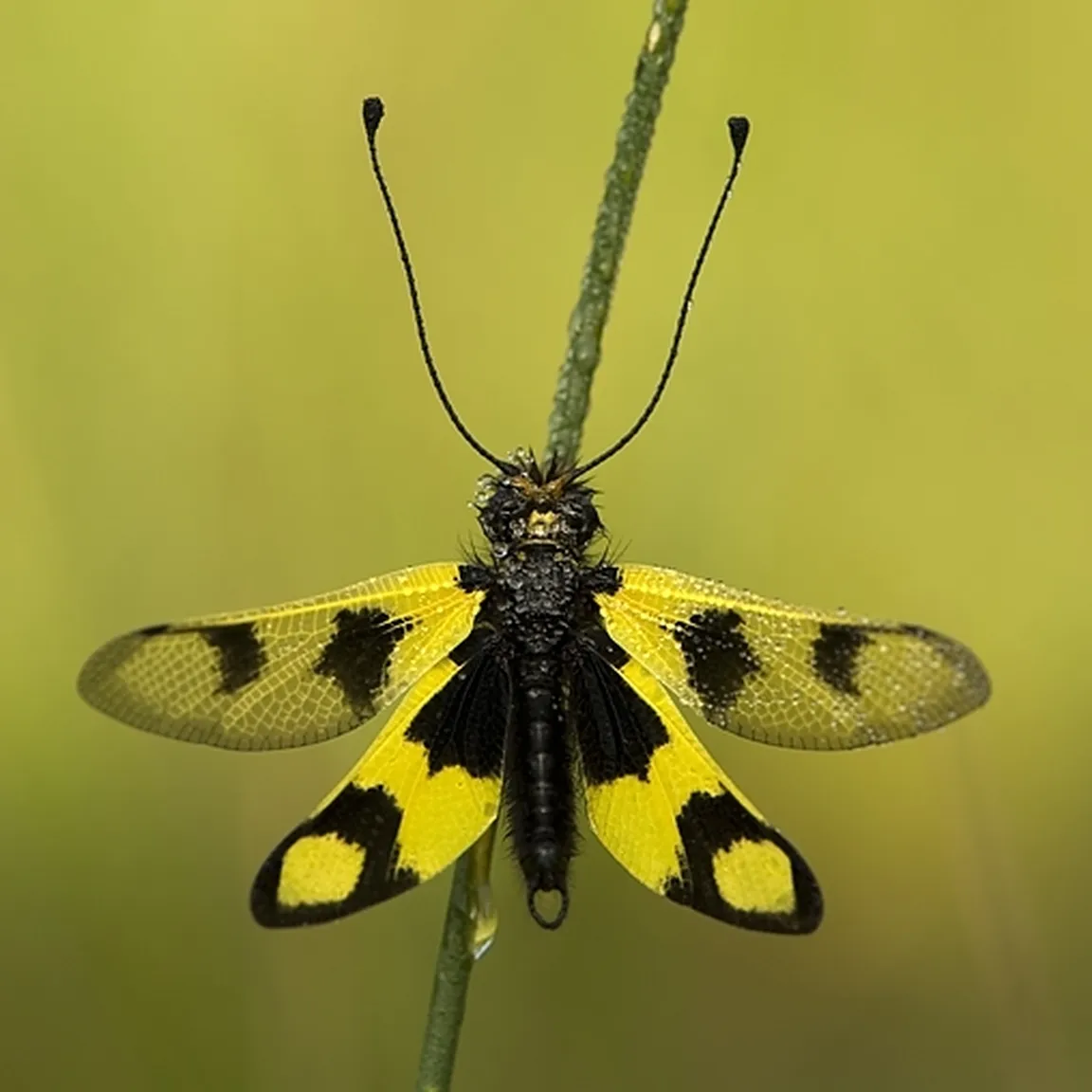At first glance the ordinary owlfly (Libelloides macaronius or Ascalaphus macaronius) resembles a dragonfly, but its very long, slender and club-tipped antennae show that this is not the case. The adult has large, bulging, distinctly veined pair of wings, which are almost identical in shape. The wings are sulfur-yellow in color with a pattern of large black spots, the outer half of the forewings is transparent. The wingspan of the largest individuals can exceed 5 cm. Its chunky, black body is densely covered with bristles. On the large head it has compound eyes, which are its greatest peculiarity. They are divided into two parts by a transverse groove. The lower part is sensitive to both ultraviolet light and the portion of light visible to humans, the upper part of the eye is sensitive only to ultraviolet light, which becomes evident in the feeding behavior of this insect.
The owlfly is a predator that hunts smaller insects in the air while flying. It spots its prey with the upper part of the eye, as moving targets against the sky stand out most in ultraviolet light.
Like all true lacewings, the owlfly is also an insect with complete metamorphosis. As a larva it lives on and in the soil. It does not build gelatinous traps on a sandy substrate, typical for larvae of related wolf-flies. It has enormous claw-like jaws, with which it grabs prey, and with its sucking mouthparts it sucks out its life juices. When it grows enough, it pupates; from the pupa, on warm summer days, an adult emerges, which lives about two months.
The adult is a diurnal creature, active only on clear days. In the morning it opens its wings wide to warm up, then it buzzes about over hot exposed areas, dry meadows and shrubs. Here it hunts prey and looks for a mate. In the evening the owlfly goes to rest, gripping a grass blade with its legs and folding its wings roof-like over the trunk, thus waiting for sunrise.


